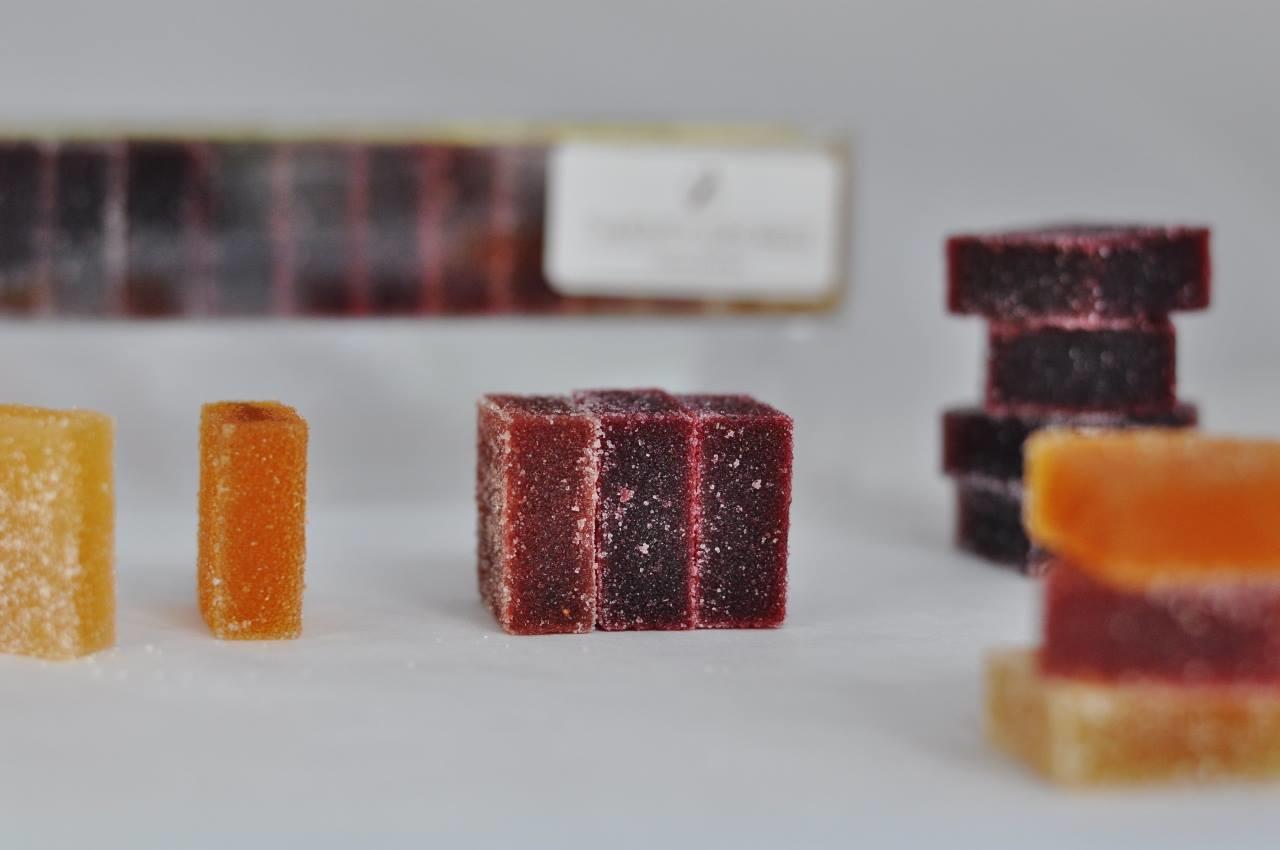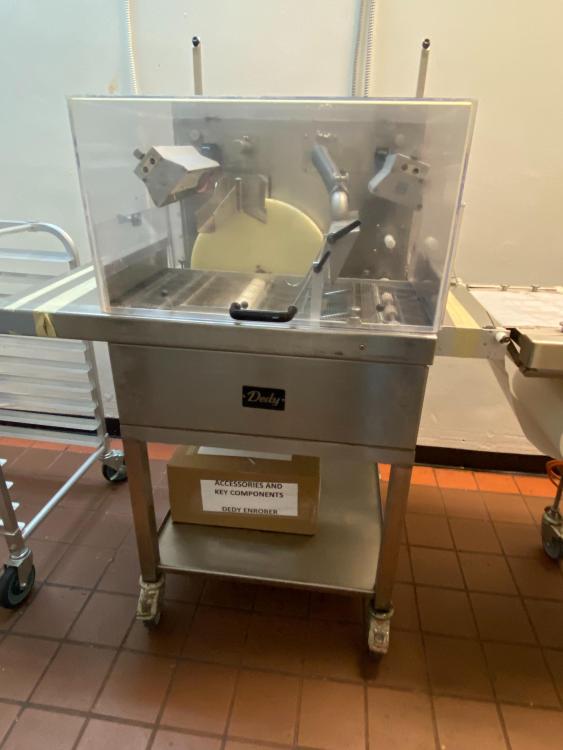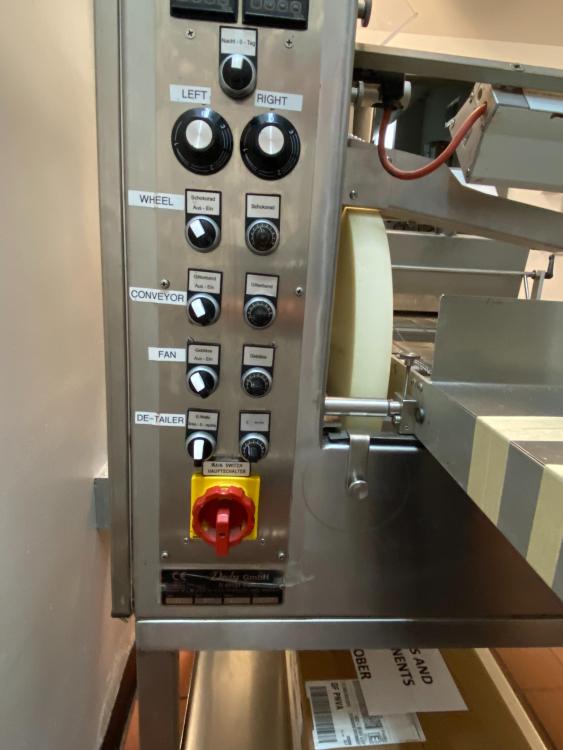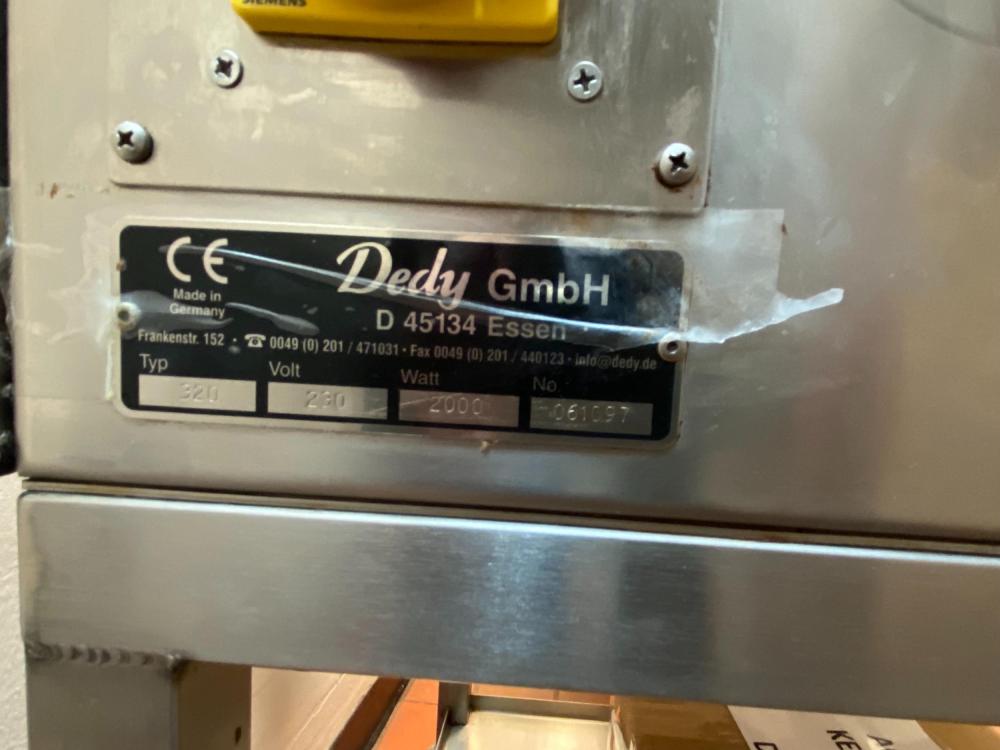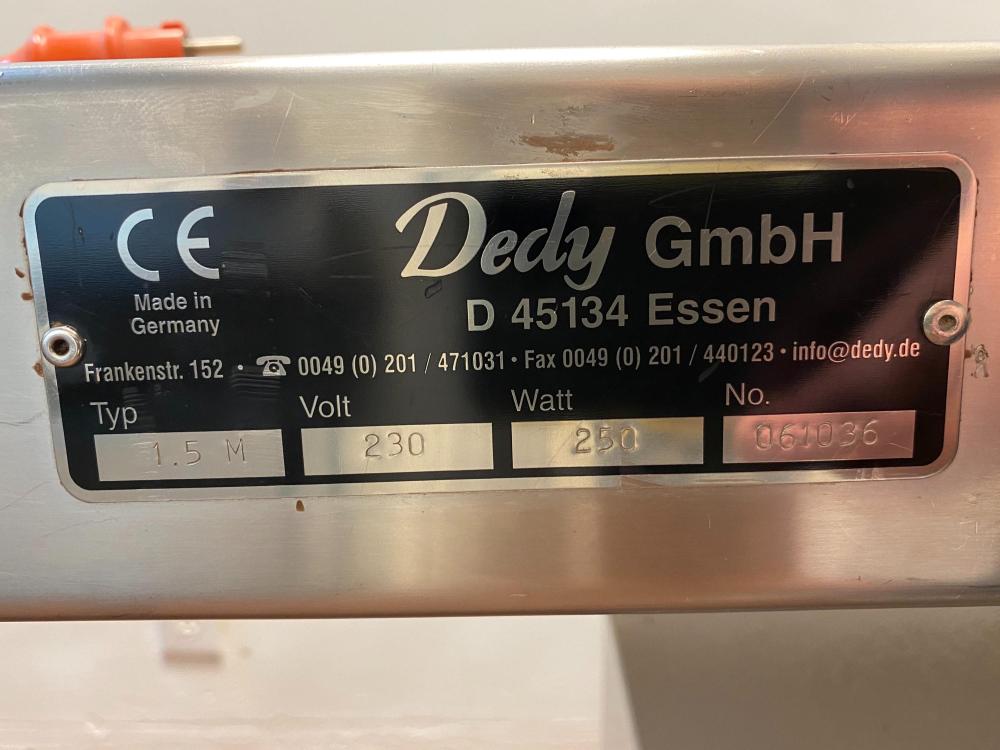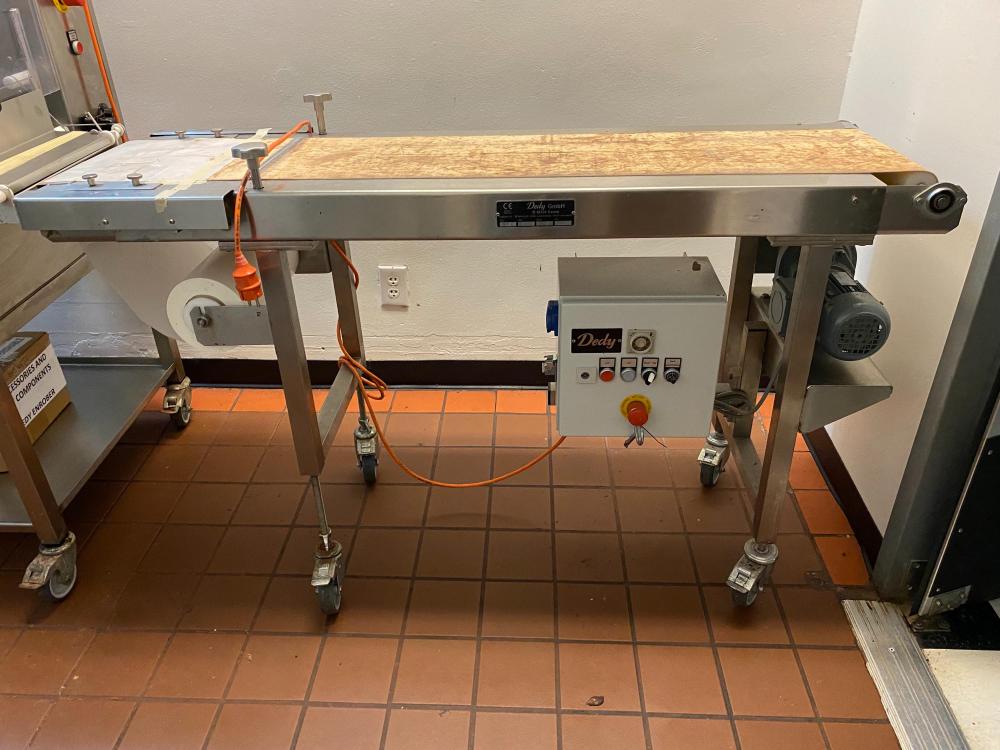-
Posts
13 -
Joined
-
Last visited
-
Retired and selling used Dedy (Germany) Model 320 wheel tempering machine with mesh enrobing belt and photo-eye controlled take-off table. -30kg capacity -shell molding and enrobing -230V, single phase -German workhorse can enrobe thousands of pieces in a few hours; feed with warm chocolate throughout enrobing session and it can run all day without over crystallizing -works great; photo-eye can be finicky but I can describe our workaround (the price takes this into account, in the event you want to buy a new photo-eye; you can get one from TCF Sales) -manufactured in 2006; I'm 2nd owner, purchased from German chocolatier who brought it to the US; have used this without issue since 2011 -located in Charlotte, NC - local pickup or you can arrange for crating and freight shipping -I have a video of it working I can email to serious inquiries
- 1 reply
-
- 2
-

-
I see you asked about an ICB specifically. I don't have and ICB, but I do have a Dedy 30kg capacity I'm selling. It has the central wheel tempering unit with spout you can use for shell molding, then add the mesh belt and connect the take-off table and you can enrobe. It does not have a built-in vibrating table; I purchased a separate one by DR Canada. Please email me directly if you are interested in the Dedy. I retired last August and have slowly been selling off my equipment. casey@20degreeschocolates.com Best of luck!
-
I have a strange problem. I have a few flavors of PDF that were cooked to at least 75 Brix (using Boiron recipe that calls for apple juice). They were cut & sugared and wrapped in plastic the day after they were cooked. Several of the flavors are now sticky. The Brix are fine, so this seems odd. Are folks consistently air-drying PDF for several days UN-wrapped? Can I fix these or are they rubbish? I thought about spritzing w/ Everclear and the re-sugaring them after a couple of days drying unwrapped. Thoughts?
-
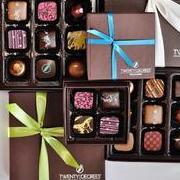
Caramel: Adding cream after sugar browns vs. cooking with cream
Casey H. replied to a topic in Pastry & Baking
Curls - Sorry I am just now replying to your note. It was Valentine's week so I was crazed. And then, well, Covid... Hope you and all on this post have weathered the pandemic ok. We are back in the kitchen and recently did, in fact, have the issue again with the caramel crystallizing before it's sell by date. Ugh. The recipe size, brand of ingredients, etc are constant. Same kitchen. Employee has been with me a year. We did have a horrific experience with a major leak in the room adjacent to our kitchen not long ago, and with which our kitchen shares an HVAC unit, but I think the caramel was already at our retail shop by then. Honestly I can't recall... It has to be humidity, right? I just can't figure out where it's coming from. I'll need to keep a closer eye on the humidity in the kitchen and be sure not to store the caramel unwrapped in the same room we're making pates de fruit in. I'm thinking of shifting to the other type of caramel - a true caramelized sugar deglazed with cream and finished with butter. We make some Genin-style hand-wrapped caramels this way and they are marvelous. Cut them on the guitar! Just not sure if they'd hold their shape enough to enrobe. If anyone has a recommendation on ratios, cook temps, etc, I would welcome them. Otherwise we'll start w/ our Genin salted-butter recipe and work from there. -

Caramel: Adding cream after sugar browns vs. cooking with cream
Casey H. replied to a topic in Pastry & Baking
Reviving an old post here due to some unexpected issues of late. I have been making the Maillard version of a caramel (soft/chewy) and then enrobing in dark chocolate for nearly 10 years. Lately, we have had issues with crystallization happening after enrobing and storing for a while. (Actually, customers who know our products well have alerted us to the issue - embarrassing, but also encouraging that they know what to expect and are kind enough to let us know since visually it's impossible to see.) We use plenty of glucose syrup (recipe almost identical to Greweling's condensed milk version). Given this method, I can't see how it occurs due to a stray sugar crystal on the edge of the pan. My only thought is some oddly high levels of humidity may have occurred at some point after production during storage. We package caramels in a clear sleeve, and also sell individually but hold them in our temp and humidity controlled candy case. None of the other bonbons or ganaches in the case show any signs of excess humidity. I'm stumped. Anyone else have issues and what have you done to ensure it doesn't occur? -
For those of you who do shell moulding in white, what are you using? I have had similar problems as Jim with Opalys with regard to thickening. We have used CB Satin Blanc also. I haven't seen Zephyr on my distributor's list, but I plan to inquire. Wondering about Zephyr and how it performs with shelling - viscosity and opacity. I plan to order some samples to test and compare side-by-side. Would welcome y'all's input, especially those who do sprayed cocoa butter decor prior to shelling. Opalys vs Zephyr vs Satin Blanc...
-

Spraying Chocolate: Equipment, Materials, and Techniques
Casey H. replied to a topic in Pastry & Baking
Jim, thanks for the follow-up and apologies for the late reply! I was in Valentine's Day hell I bit the bullet and got a Grex LVLP X4000 and 2HP compressor. We'll be testing it out next week - just in time for Easter decor. So excited! I'll report back. I'm so grateful for this thread and this group! -

Spraying Chocolate: Equipment, Materials, and Techniques
Casey H. replied to a topic in Pastry & Baking
That was extremely helpful. The luster dust situation finally crystallized in my mind (pardon the pun) yesterday, and I realized my clogging is likely due to the alcohol evaporating so quickly in the airbrush, leaving dusty gunk inside. D'oh! How'd I not think of that earlier? Sounds very much like I ought to get an HVLP. I have made the mistake of under-spec'ing my equipment one too many times (Paasche being the prime example). Time to strap on some ovaries and get that big compressor and gun. :) Thanks for your input! -

Spraying Chocolate: Equipment, Materials, and Techniques
Casey H. replied to a topic in Pastry & Baking
I've been lurking around this topic for ages now. I absolutely need to get this figured out. I see some of you using an HVLP gun, others a Grex. I was leaning toward a Grex. I would use it for cocoa butter for moulds (mostly demi-sphere moulds but also seasonal hearts, eggs, santas, etc). I'd *like* to achieve a splatter effect as well as gradient and full-color backing from a single system. My current system (such as it is) is ye olde toothbrush method for splatters, finger or brush dip-and-swirl, blotting w/ various textured things like crumpled clingwrap, and hand-painting for full-color backing. I would still do some of my "hand" techniques that a brush/gun can't achieve. But, for splatters and full backing and the possibilities of gradients, I'd love a single tool. We are small-batch, so 5 moulds/140 cavities of a single pattern per flavor. Would do 5 - 8 flavors on a given decorating day (25 - 40 moulds). I'd love to get through at least one set/flavor before I have to heat up a gun/airbrush; multiples would be great. Would a Grex Tritium gravity feed with .7mm do it? Do I need an HVLP? Also of note, we use luster dusts with alcohol and we like to spray those, but my little Paasche is finicky so we've resorted to hand-painting those as well. I prefer to use my new spraying system for liquified lusters as well as cocoa butter (I realize this will mean we must clean carefully and ensure all water is gone when we switch out...). As for compressors, it seems I need 1HP??? And Grex website indicates 30psi for spraying cocoa butter, but I see others needing more. HVLP seems like it may be overkill given how much cocoa butter the cup holds. I. am. overwhelmed. I appreciate any insights, especially from those whose production style might match ours. THANKS ALL. -

Molded and Filled Chocolates: Troubleshooting and Techniques
Casey H. replied to a topic in Pastry & Baking
Yes, chocolate is a cruel mistress. But so enticing, we keep coming back! -
Kerry - thank you for inquiring. Actually, I dumped the liquid CB onto parchment to firm up at room temp, cleaned and thoroughly dried the canister, and started with 'new' cocoa butter the 2nd time, and again yesterday. I didn't want to wait for the first batch to firm up completely (I can be impatient - not a good trait in a chocolatier!), so I got fresh CB in pellet form each time. I am heading in to the workshop shortly and can report back on the temps - I did inch it up to 33.1 last night before I left b/c it had been about 10-11 hours and wasn't softened as much as I'd expect by then. Thanks.
-
Thanks, Daniel. After I stirred it, it definitely was not mayonnaise consistency -- more like a thick pastry cream. That's what worried me. Is the consistency of your cocoa butter mayonnaise-like at 33.8? I will inch up the temp tonight above 33 and see how it goes tomorrow. I will test it even if it's more fluid than I expect and see what results I get. I appreciate the quick reply. @Kerry Bealand I have been in contact about this, but as each brand of cocoa butter is different, I wanted to get input from those specifically using my brand. Much obliged!
-
Hello y'all! Long-time lurker; first-time poster. I have read nearly all 19 pages of this thread; very informative! I just rec'd my EZ Temper unit Friday. HOORAY! I have twice added my cocoa butter (Cacao Barry tiny pellets; not old and still in temper) and warmed it overnight in the EZ Temper. First time, I melted at factory setting of 33.7; the result was too liquid with melted cocoa butter on top. 2nd time I melted at 33.5; same result. I am now melting at 32.9 and hoping that will do the trick. I've checked and I can hear the slight "whir" of the fan, so that shouldn't be the problem. For those who use Cacao Barry pure cocoa butter pellets, can you advise if there's a magic target temperature you use? @pastrygirl, I think you use Cacao Barry, right? I hate to have to keep testing this in tiny increments; I want to use this baby!!! Any advice would be helpful. Thanks all.

